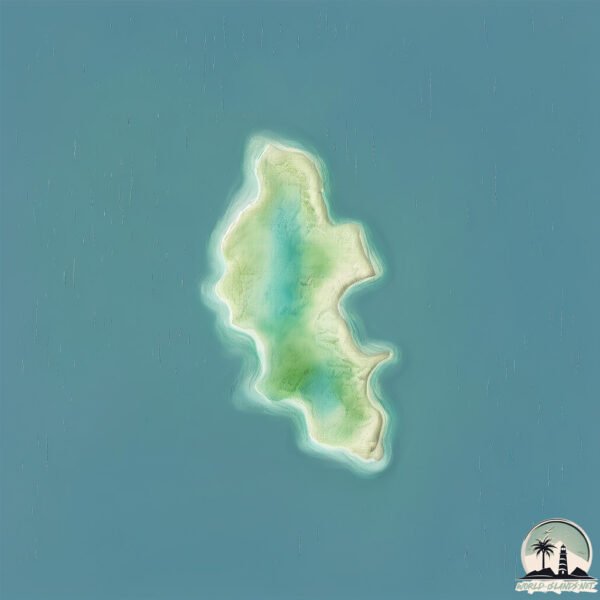Welcome to Knight Island , a Tropical island in the Coral Sea, part of the majestic Pacific Ocean. This guide offers a comprehensive overview of what makes Knight Island unique – from its geography and climate to its population, infrastructure, and beyond. Dive into the details:
Geography and size of Knight Island
Size: 1.504 km²Coastline: 7 kmOcean: Pacific OceanSea: Coral SeaContinent: Oceania
Knight Island is a Small Island spanning 1.5 km² with a coastline of 7 km.
Archipel: –
Tectonic Plate: Somalia – A large tectonic plate covering the Horn of Africa and parts of the Indian Ocean, known for the East African Rift where it’s splitting away from the African Plate.
The geographic heart of the island is pinpointed at these coordinates:
Climate and weather of Knight Island
Climate Zone: TropicalClimate Details: Tropical Savanna, WetTemperature: Hot
Climate Characteristics: Defined by distinct wet and dry seasons with high temperatures year-round. Pronounced rainfall occurs during the wet season, while the dry season is marked by drought.
Topography and nature of Knight Island
Timezone: UTC+10:00Timezone places: Australia/SydneyMax. Elevation: 41 m Mean Elevation: 27 mVegetation: Evergreen Broadleaf ForestTree Coverage: 66%
The mean elevation is 27 m. The highest elevation on the island reaches approximately 41 meters above sea level. The island is characterized by Plains: Flat, low-lying lands characterized by a maximum elevation of up to 200 meters. On islands, plains are typically coastal lowlands or central flat areas.
Dominating Vegetation: Evergreen Broadleaf Forest
Vegetation: 4 vegetation zones – Diverse Island
Infrastructure and Travelling to Knight Island
Does the island have a public airport? no .
Does the island have a major port? no .
The mean population of Knight Island is 0 per km². Knight Island is Uninhabited. The island belongs to Australia .
Continuing your journey, Scawfell is the next notable island, situated merely km away.
Poor Knight's Island Dive
TheWOA dives into the waters surrounding Poor Knights Island, a site lauded by none other than Jacques Cousteau as one of the ...
Poor Knight's Island Dive
TheWOA dives into the waters surrounding Poor Knights Island, a site ...
TheWOA dives into the waters surrounding Poor Knights Island, a site lauded by none other than Jacques Cousteau as one of the ...
The Poor Knights Islands – Northland, New Zealand
Cruise, kayak, paddleboard, dive or snorkel at the world famous Poor ...
Cruise, kayak, paddleboard, dive or snorkel at the world famous Poor Knights Islands, twenty three kilometres off New Zealand's ...
Knights of the Island 2022 - The ultimate UK adventure rally
Knights of the Island - Great Britain's wildest adventure rally. ...
Knights of the Island - Great Britain's wildest adventure rally. Conquer the castles and manor estates of England, crest the ...
Australia is classified as Developed region: nonG7: Developed economies outside of the Group of Seven, characterized by high income and advanced economic structures. The level of income is High income: OECD.
News – Latest Updates and Headlines from Knight Island
Stay informed with the most recent news and important headlines from Knight Island. Here’s a roundup of the latest developments.
Loading...
Please note: The data used here has been primarily extracted from satellite readings. Deviations from exact values may occur, particularly regarding the height of elevations and population density. Land area and coastline measurements refer to average values at mean high tide.

